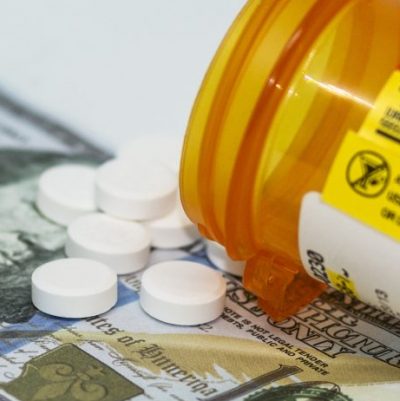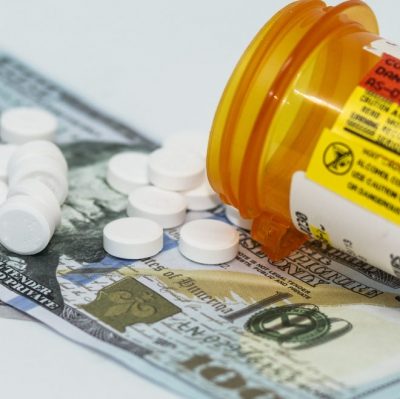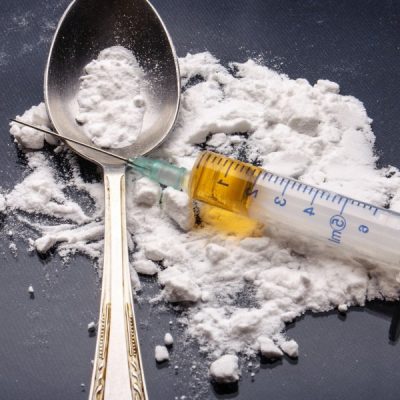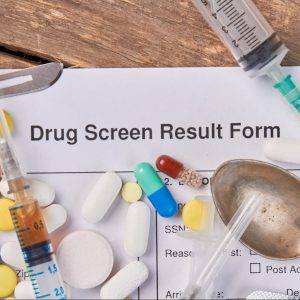
The legalization of medical marijuana in over 24 states and the legalization of recreational marijuana use in several states creates a big question for employers. While the use of marijuana is rapidly gaining acceptance in today’s society, the fact remains that it is still illegal according to Federal laws.
So the question remains…
Do we really want to drug test our applicants & employees?
Let’s not throw the baby out with the bath water…The real question employers should be asking is:
Do we want to include marijuana in our drug testing panel?
The answer is – It really depends on the employer and other factors. Employers that are regulated by Federal Agencies like the Department of Transportation or Department of Defense are required to include marijuana or THC in their drug test panels. Non-regulated companies have far more latitude when it comes to drug testing and can choose what drugs they want to test for, how to test for it (urine, saliva, hair, blood) and how often or what situations to test in.
CONSIDERATIONS
First and foremost, it is important to understand and realize why drug testing is so important in the first place. Considering these factors may help in making your decision:
 Q: Do you really want a heroin addict or “meth head” driving that forklift or entering your customer’s home or office?
Q: Do you really want a heroin addict or “meth head” driving that forklift or entering your customer’s home or office?
A: Of course not – nothing good can come of that. From accidents to theft to loss of productivity and higher insurance costs – a drug abuser on the payroll is never a good idea so ditching drug testing altogether is probably not the best option.
Q: Can an accident be caused by someone impaired by marijuana use?
A: Yes, marijuana use has been proven to slow reaction times under normal and emergency conditions..
Q: Can an applicant or employee use marijuana over the weekend and be completely unimpaired when reporting to work Monday morning?
A: Most likely, yes. Impairment is most recognized by the user during the first 4-6 hours of use, however, studies have shown impairment can last up to 24 hours.
Q: Will a urine(the most common specimen) drug screen show recreational use of marijuana?
A: Yes. Urine specimens can show drug use for 2-4 days and up to 30 days for chronic marijuana users.
Q: Can I just ignore a positive marijuana test?
A: As an employer, under no circumstances, should you ignore a positive drug test for marijuana or any other drug. Doing so opens everyone up to significant liability.
TRENDS
With the legalization of marijuana for medical or recreational use in several states, two very distinct trends are appearing when it comes to employer drug testing.
The first trend is that companies are reinforcing their current drug policies, specifically  stating that even though medicinal or recreational use of marijuana is legal in some states, the company still recognizes federal laws that identifies marijuana as an illegal drug and does not condone or allow marijuana use by its employees. The policy further states that positive test results for marijuana will result in disciplinary action. State Supreme Courts have already upheld the employer’s right to discipline an employee for a positive drug test for THC – even in states where marijuana is legal medically or recreationally.
stating that even though medicinal or recreational use of marijuana is legal in some states, the company still recognizes federal laws that identifies marijuana as an illegal drug and does not condone or allow marijuana use by its employees. The policy further states that positive test results for marijuana will result in disciplinary action. State Supreme Courts have already upheld the employer’s right to discipline an employee for a positive drug test for THC – even in states where marijuana is legal medically or recreationally.
 The second option some companies are choosing is to remove marijuana (THC) from their current drug test panels for pre-employment and random drug testing. They are, however, keeping marijuana (THC) in the drug test panels for post accident testing and reasonable suspicion testing – using oral saliva as the specimen instead of urine. Oral saliva testing in addition to instant alcohol tests for post accident or reasonable suspicion situations is quickly gaining in popularity. Testing, combined with supervisory observations, seek to provide evidence of impairment at the time of the incident or observation. Oral saliva testing is used because, unlike other specimen types, it can detect immediate recent use of drugs and can only detect up to approximately 72 hours.
The second option some companies are choosing is to remove marijuana (THC) from their current drug test panels for pre-employment and random drug testing. They are, however, keeping marijuana (THC) in the drug test panels for post accident testing and reasonable suspicion testing – using oral saliva as the specimen instead of urine. Oral saliva testing in addition to instant alcohol tests for post accident or reasonable suspicion situations is quickly gaining in popularity. Testing, combined with supervisory observations, seek to provide evidence of impairment at the time of the incident or observation. Oral saliva testing is used because, unlike other specimen types, it can detect immediate recent use of drugs and can only detect up to approximately 72 hours.
THE CHOICE
The choice is not clear cut – unless you are in a regulated industry. As an employer in an unregulated industry, you must weigh the pros and cons to determine what kind of drug testing program and policy works best for your company. It is best to educate yourself on your options including the types of drug tests available, when drug and/or alcohol testing should be done, the different specimen types, and the length of time each specimen can detect use. A Certified Drug & Alcohol Testing Consultant can assist you in making the best, most informed decision for your company as well as help you to review, edit or develop a solid substance free workplace policy that meets your company’s needs.
ABOUT CAROLINA TESTING
Our Certified Drug & Alcohol Testing Consultants educate and guide employers and organizations in best practices to educate, deter and prevent illicit drug use through effective review, development and management of substance free policies.
Steadfastly dedicated to a strict code of ethics, confidentiality and integrity in the performance of our duties, Carolina Testing is positioned as trusted professionals in the drug and alcohol testing industry, promoting ongoing education and training in our fields of expertise. We take pride in offering free educational seminars to schools and community organizations illustrating the dangers and damaging effects illicit drug use can play in our workplaces, families and communities.
For more information, or a FREE, no obligation consultation, please contact us today!





 The MRO Review Process
The MRO Review Process 
 One of the most misunderstood and confusing aspects of drug testing – especially when it comes to drug test results – surrounds the term “levels.” Understanding what levels mean in the drug testing process requires an understanding of how drug testing is performed to begin with and what final results really mean. There are three types of “levels” found on a typical drug test result report. They are: screen cutoff level, confirm cutoff level and actual level (also known as test level).
One of the most misunderstood and confusing aspects of drug testing – especially when it comes to drug test results – surrounds the term “levels.” Understanding what levels mean in the drug testing process requires an understanding of how drug testing is performed to begin with and what final results really mean. There are three types of “levels” found on a typical drug test result report. They are: screen cutoff level, confirm cutoff level and actual level (also known as test level). 

 In cases of legal investigations or tracking substance abuse in an individual, levels are a valuable tool to determining if a drug user has abstained from further use or has continued using a specific drug. In order to determine this, an initial drug test must be performed to obtain the “starting point” or “initial level.” For tracking purposes, hair follicle testing is most beneficial specimen to test because it detects substance use over a period of 90 days. Once an initial level has been obtained from the first drug test, subsequent testing using the same specimen type and laboratory will show comparative levels against the initial level. If the number of the level on a subsequent test is lower, it indicates that the user has not engaged in additional drug use since the last test that was conducted. A higher level would indicate continued use.
In cases of legal investigations or tracking substance abuse in an individual, levels are a valuable tool to determining if a drug user has abstained from further use or has continued using a specific drug. In order to determine this, an initial drug test must be performed to obtain the “starting point” or “initial level.” For tracking purposes, hair follicle testing is most beneficial specimen to test because it detects substance use over a period of 90 days. Once an initial level has been obtained from the first drug test, subsequent testing using the same specimen type and laboratory will show comparative levels against the initial level. If the number of the level on a subsequent test is lower, it indicates that the user has not engaged in additional drug use since the last test that was conducted. A higher level would indicate continued use.
 Q: Do you really want a heroin addict or “meth head” driving that forklift or entering your customer’s home or office?
Q: Do you really want a heroin addict or “meth head” driving that forklift or entering your customer’s home or office? stating that even though medicinal or recreational use of marijuana is legal in some states, the company still recognizes federal laws that identifies marijuana as an illegal drug and does not condone or allow marijuana use by its employees. The policy further states that positive test results for marijuana will result in disciplinary action. State Supreme Courts have already upheld the employer’s right to discipline an employee for a positive drug test for THC – even in states where marijuana is legal medically or recreationally.
stating that even though medicinal or recreational use of marijuana is legal in some states, the company still recognizes federal laws that identifies marijuana as an illegal drug and does not condone or allow marijuana use by its employees. The policy further states that positive test results for marijuana will result in disciplinary action. State Supreme Courts have already upheld the employer’s right to discipline an employee for a positive drug test for THC – even in states where marijuana is legal medically or recreationally. The second option some companies are choosing is to remove marijuana (THC) from their current drug test panels for pre-employment and random drug testing. They are, however, keeping marijuana (THC) in the drug test panels for post accident testing and reasonable suspicion testing – using oral saliva as the specimen instead of urine. Oral saliva testing in addition to instant alcohol tests for post accident or reasonable suspicion situations is quickly gaining in popularity. Testing, combined with supervisory observations, seek to provide evidence of impairment at the time of the incident or observation. Oral saliva testing is used because, unlike other specimen types, it can detect immediate recent use of drugs and can only detect up to approximately 72 hours.
The second option some companies are choosing is to remove marijuana (THC) from their current drug test panels for pre-employment and random drug testing. They are, however, keeping marijuana (THC) in the drug test panels for post accident testing and reasonable suspicion testing – using oral saliva as the specimen instead of urine. Oral saliva testing in addition to instant alcohol tests for post accident or reasonable suspicion situations is quickly gaining in popularity. Testing, combined with supervisory observations, seek to provide evidence of impairment at the time of the incident or observation. Oral saliva testing is used because, unlike other specimen types, it can detect immediate recent use of drugs and can only detect up to approximately 72 hours. DNA paternity testing is an important genetic test that determines the biological father of a child. DNA is received from our biological parents — half from our mother and half from our father. A DNA paternity test compares the child’s DNA patterns with that of the alleged father to determine if there is a genetic match confirming or denying paternity.
DNA paternity testing is an important genetic test that determines the biological father of a child. DNA is received from our biological parents — half from our mother and half from our father. A DNA paternity test compares the child’s DNA patterns with that of the alleged father to determine if there is a genetic match confirming or denying paternity.






 What to do?
What to do? Hair Follicle Drug Tests on the Rise
Hair Follicle Drug Tests on the Rise
 Cocaine, derived from the coca plant is native to South America where many people chew the plant’s leaves to reduce pain, thirst, hunger, while giving a boost of energy. By the 1880s, doctors were studying cocaine as a miracle anesthetic for surgeries. It was also being studied for a variety of health conditions including anxiety and pain. By the turn of the 20th century, fatalities were associated with cocaine and an article in
Cocaine, derived from the coca plant is native to South America where many people chew the plant’s leaves to reduce pain, thirst, hunger, while giving a boost of energy. By the 1880s, doctors were studying cocaine as a miracle anesthetic for surgeries. It was also being studied for a variety of health conditions including anxiety and pain. By the turn of the 20th century, fatalities were associated with cocaine and an article in 